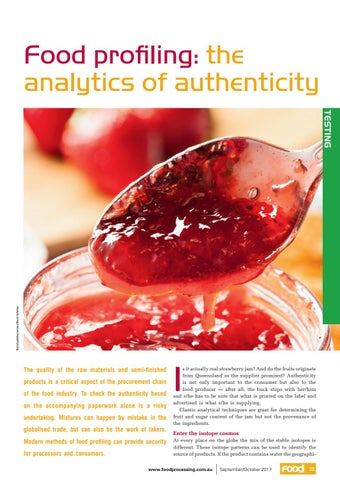Food profiling: the analytics of authenticity
Šstock.adobe.com/au/Brent Hofacker
BULK HANDLING, STORAGE & LOGISTICS TESTING
The quality of the raw materials and semi-finished products is a critical aspect of the procurement chain of the food industry. To check the authenticity based on the accompanying paperwork alone is a risky undertaking. Mixtures can happen by mistake in the globalised trade, but can also be the work of fakers. Modern methods of food profiling can provide security for processors and consumers.
I
s it actually real strawberry jam? And do the fruits originate from Queensland as the supplier promised? Authenticity is not only important to the consumer but also to the food producer — after all, the buck stops with her/him and s/he has to be sure that what is printed on the label and advertised is what s/he is supplying. Classic analytical techniques are great for determining the fruit and sugar content of the jam but not the provenance of the ingredients.
Enter the isotope cosmos At every place on the globe the mix of the stable isotopes is different. These isotope patterns can be used to identify the source of products. If the product contains water the geographi-
www.foodprocessing.com.au
September/October 2017
23
